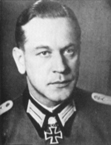tolsdorff
Posts: 204
Joined: 12/12/2016
Status: offline

|
rottmann on CVE's

quote:
C.3. Marine Aircraft Carrier Units
Perhaps one the Marine Corps’ major failings in World War II was its failure
to aggressively demand that Marine aviation units be deployed aboard carriers.
The primary mission of Marine aviation was “the support of the Fleet Marine
Force in landing operations and in support of troop activities in the field.”
Through 1943, land-based Marine aircraft adequately supported the infantry in
the closely grouped Solomons and on New Britain, where sufficient land bases
were within range. But 1944 was a different matter. The Central Pacific islands
were widely separated, and airfields were at a premium. Marine units operating
from carriers would have been able to support landing operations from the be-
ginning. While it is true that the Navy resisted efforts to embark Marine aviation
aboard carriers, it is also true that the Marines did not push the point. Marine
aviation had become enamored with shooting down enemy airplanes, a principal
USAAF mission, while carrier-based Navy aviation provided much of the close
air support to Marine ground units. As the Fleet Marine Force battled through
the Marshalls and Marianas, supported by the Navy and USAAF, much of the
Marine aviation was relegated to endlessly bombing bypassed, Japanese-held
eastern Marshall and Caroline Islands into coral dust.
It was not until the summer of 1944 that LtGen Vandegrift, Commandant of
the Marine Corps, began to aggressively lobby for Marines aboard carriers. The
war was expected to last into late 1946. Ground forces needed dedicated and
specialized Marine close air support from the beginning of an operation. While
all this made sense, the Navy initially balked, but the truth of the matter was
that by late 1944, the Navy was hard-pressed to provide squadrons to all of its
almost 50 escort carriers. This resulted in Marine squadrons filling gaps aboard
fleet carriers as well. The Navy’s shortages were so severe that the scheduled 20
Jan 45 Iwo Jima assault was postponed until 19 Feb 45. It had to await the
deployment of eight Marine squadrons on fleet carriers in order to have sufficient
aircraft to execute preemptive strikes in the Tokyo area. Marine escort carrier air
units were raised in the fall of 1944, squadron training was begun, and Navy air
support training units were formed to train Marine squadrons in CAS. The first
units were assigned to flattops in Feb 45.
Marine carrier-based units were deployed aboard two types of aircraft carriers:
fleet carriers (CV) and escort carriers (CVE). Marine aviation units embarked
aboard CVs were subordinate to the Navy carrier air group (CVG) but were the
sole unit aboard CVEs. Other Marine aviation units frequently operated off other
carriers but were not committed directly to combat or were merely transported
to fly into island bases, from which they conducted land-based combat opera-
tions. The first Marine unit to fly combat missions from an aircraft carrier was
Detachment, Flight Echelon, VMO-155 flying in support of the Army’s May 43
Attu Landing (Operation LANDCRAB ) from the USS Nassau (ACV-16, later rede-
signated CVE-16). Equipped with three F4F-3P photo recon fighters, the detach-
ment was the only FMF unit to operate in the North Pacific Area.
*The Essex Carrier Air Group 4 (CVG-4) was commanded by a Marine officer from Jan 45.
Marine fighting and torpedo-bombing squadrons specifically organized to op-
erate from escort aircraft carriers had the sole mission of direct support of ground
units. They were designated “(CVS)” for carrier squadron. It was originally en-
visioned that 11 CVEs would be provided to the Marine Corps, but only 6 had
been made available by V-J Day. Marine squadrons operating from fleet carriers
retained their standard organization and were not redesignated “(CVS).”
Carrier units were controlled by three echelons of command, all of which in-
cluded “group” in their designations and can be confusing. These units were
subordinate to Marine Carrier Groups, Aircraft, FMFPac established on 21 Oct
44. It controlled Marine Air Support Groups (MASG) 48 and 51 (the latter never
deployed aboard carriers) during unit training. The MASGs were each respon-
sible for four Marine Carrier Groups (MCVG), of which 16 were formed. MASG-
48’s MCVGs were each embarked aboard four Commencement Bay–class CVEs
assigned to a six-carrier division. The other two ships of Carrier Division 27
hosted Navy aviation units to fly antisubmarine and combat air patrols. Each
MCVG had a VMF(CVS) with 16 FM-2 (or F4U-1) and two F6F-5P (photo recon)
fighters, a VMTB(CVS) with 12 TBM torpedo-bombers, and a Marine Carrier
Aircraft Service Detachment (CASD) for centralized maintenance. The latter were
components of the MASG, until actually assigned to a carrier. There was no
MCVG headquarters; the senior squadron commander served in this billet. The
USS Block Island (CVE-106, not to be confused with CVE-21 lost earlier) was
equipped with a height-finder radar and could support night fighters. Its
VMF(CVS)-511 was equipped with 10 FM-2 (or F4U-1), eight F6F-3N night, and
two F6F-5P photo recon fighters.
MASG-51 (2d Division, Marine Carrier Groups) was not committed to combat,
but MASG-48, headquartered aboard USS Block Island, was (its MCVG-3 saw only
very limited combat):
The two Navy aviation–staffed CVEs rounding out the division were the USS
Kula Gulf (CVE-108) and USS Siboney (CVE-112). It was planned for eight CVEs
with MCVGs embarked to provide CAS during the invasion of Japan. MCVG-5
and 6 were embarked on USS Salerno Bay and USS Puget Sound on V-J Day but
did not see combat. MCVG-7 and 8 were not embarked aboard CVEs until Nov
45.
Besides carrier operations, another shipboard aviation initiative was consid-
ered. The U.S. Navy was impressed by the IJN’s use of float planes for attack
and reconnaissance from undeveloped forward island bases lacking airfields. It
was proposed that twin float-equipped Marine scout-bombers and fighters (pre-
sumably, Curtiss XSB2C-2 Helldivers and Grumman F4F-6S Wildcats) be based
on specially built seaplane tenders to support advanced base operations. Four
Currituck-class seaplane tenders (AV-7, 11–13) were built between 1944 and 1945
for this role and fitted with flush-deck catapults. This plan was never imple-
mented, however.
*Edit : edited the layout a little
 Attachment (1) Attachment (1)
< Message edited by tolsdorff -- 12/25/2019 3:22:10 PM >
|
 Printable Version
Printable Version

















 New Messages
New Messages No New Messages
No New Messages Hot Topic w/ New Messages
Hot Topic w/ New Messages Hot Topic w/o New Messages
Hot Topic w/o New Messages Locked w/ New Messages
Locked w/ New Messages Locked w/o New Messages
Locked w/o New Messages Post New Thread
Post New Thread